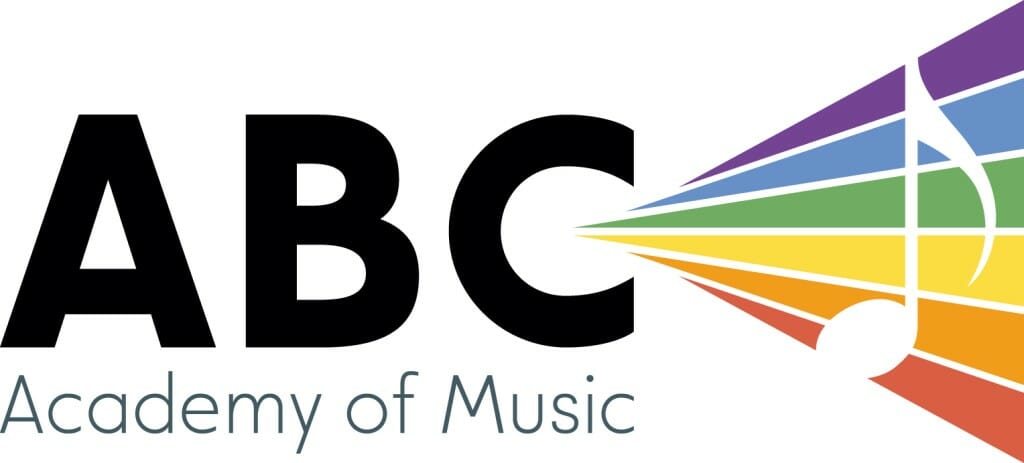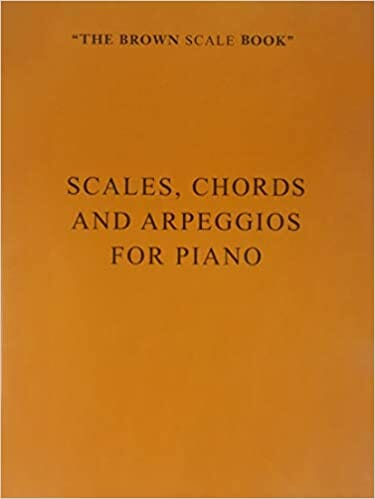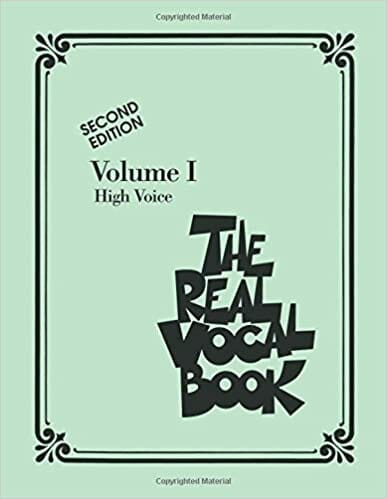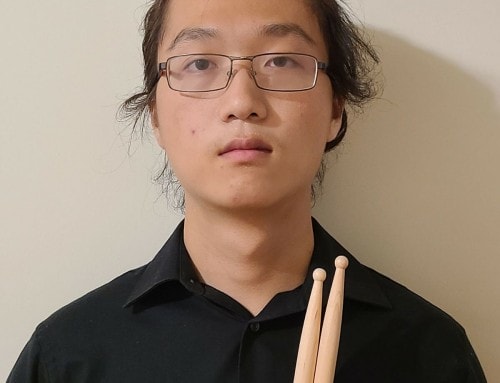B.Mus (Humber) in-progress
Adina is a singer-songwriter based in Toronto completing her Bachelor of Music degree at Humber College in vocal performance. Trained classically in piano since the age of 5, she has branched out into pop and jazz as well.
Vocally she is well-versed in many genres including jazz (she loves to scat!), musical theatre, pop, singer-songwriter, country, R&B, and acappella. She has 7 years of choir experience in both chamber and jazz styles. Adina has been writing and singing original songs since the age of 12, and has two singles as well as an EP out on all platforms under the artist name Adina V.
She has performed all across southern Ontario singing with the Toronto All-Star Big Band, as well as at various venues in the GTA with her own jazz duos and trios. As a member of the Cawthra Park Chamber Choir she performed at Roy Thompson Hall with the TSO for two years in a row. At Humber College she is part of the Vocal Jazz Ensemble led by Lisa Martinelli; this group performs advanced repertoire at events like the Ontario Vocal Jazz Festival.
Adina has been teaching music for the past 7 years and loves helping students meet their personal goals while fostering a love of music that lasts forever!
Get to know Adina…Beyond the Bio!
Hobbies: reading, puzzles, video games, painting
Musical Influences: Ella Fitzgerald, Nancy Wilson, Doris Day, Joni Mitchell, Taylor Swift, John Mayer
Favourite Food: Pad Thai
Least favourite food: eggplant
Favourite music: Indie rock and folk
Favourite song: All I Need by Jacob Collier ft. Mahalia & Ty Dolla $ign
Favourite movie: Matilda
Favourite movie music: The Pirates of the Caribbean theme
Favourite Musical: Dear Evan Hansen or The Last Five Years
Best Quote from your teacher: “It’s an amazing and wonderful experience to be able to be intentional about, in the moment, making music”
Favourite Quote: “Even as we are, we are becoming”
Favourite Book: The Girl With the Dragon Tattoo trilogy – Stieg Larsson
Best thing about teaching at ABC: Sharing and fostering a love of music with students of all ages
Latest Homework from Adina
Is Adina Your Teacher?
Sign up now to get your weekly assignments delivered, and never lose your homework sheet again!
Sunday January 3rd, 2021
Thank you for a wonderful first day! I really enjoyed meeting all of you and hearing what you’ve been working on.
Nathalia
I would love to meet/chat with one of your parents next lesson; we can discuss new book options as well as sending me photos of the pieces in your current book that you haven’t yet played.
We will add a quick warmup before your practice routine – C major and F major triads and inversions (hands separately). With RH, we use fingers 1, 3, 5 for all except 1st inversion which is 1, 2, 5. LH uses fingers 5, 3, 1 for all except 2nd inversion which is 5, 2, 1.
Cool Walkin’ Bass – Let’s gradually work on speeding this song up. Your swinging eighths are feeling good, and it’ll groove even more at the quicker tempo. The piece suggests 108bpm and we are currently playing it around 70bpm. See if you can find a metronome or a metronome app to help you gradually increase your tempo (I’d suggest 5bpm increments).
Emet
We still start adding a quick warmup to the beginning of your practice routine: this week use page 38 as a guide and play D natural, harmonic, and melodic minor hands separately 1 octave.
Scarborough fair – When practicing this piece take it hands separately at the start (once through left hand, once through right hand) before putting the hands together. The speed you start at should be slower, and one that you can maintain for the entire piece without having to hesitate too much on trickier bars. Be careful with your ending (the 8va means one octave up, and your last note is long, not staccato!).
Intermezzo – Let’s only play the Allegro section this week since there is so much good stuff to focus on here. Allegro means “fast”, so work towards getting the first line nice and quick. Then – as you pointed out – the second line is slower. There should be a big contrast between the first and second lines not only because of the speed but also the dynamics – work on exaggerating the difference. Your staccatos are quite good for the most part, just go ahead and play bars 3 and 6 a few times by themselves to get comfortable with RH being legato while LH has staccatos.
Hound Dog – Keep this one hands separately for now and really focus on RH’s rhythm. Practice by playing while counting with “ands” like we did in our lesson – this will really help when you have lots of eighth notes and rests!
Kollel
We will add a warmup at the beginning of your practice routine; this week let’s do the G major scale (2 octaves hands separately) and the G major triads (one octave hands separately).
Für Elise – This piece is divided into three major sections – you are most comfortable with the first section, so let’s add pedal there. For all LH parts where you have an octave then a cross over, keep your thumb on its side and tuck finger 3 over so we don’t do a crazy twist with your thumb standing up! I suggest taking the second section hands separately for a bit to really solidify those parts. The third section you can still keep hands together, just double check each note in those chords/shapes in the RH
In Church – Keep working on note learning and putting the second half of the piece hands together. Be careful with your LH wrist since it seems to like coming up when you play your chords – aim to have it in line with the rest of your arm (RH is already doing a good job at this).
Renaud
We will add a short warmup before you jump into practicing your pieces – this should only take a minute or two. One hand at a time in C position walk up and down the 5 note scale. Remember to keep your fingers bent and avoid flat fingers.
Grandmother – Right off the bat notice if your notes are moving up or down (hint: in this piece we mainly move down). Take bar 5 and play it a few times by itself before playing the whole song since this is the hardest bar; we need LH to hold both C and G for the full 4 beats while RH plays its melody
Lemonade Stand – We can tell if we are moving in skips because notes will go line to line or space to space. Try to memorize that your first space in treble clef is F. With tied notes we don’t play the second note in the pair; instead just keep holding (in this song our tied notes are equal to 6 beats).
Carmen
We will add a warmup at the beginning of your practice routine – this should only take 3-5 minutes. This week we will do the D major scale one octave hands separately. Remember that this scale has both F# and C#. Fingering for RH is 1-2-3-1-2-3-4-5 going up, and LH is 5-4-3-2-1-3-2-1. When crossing with thumb, tuck under; when crossing with 3, go over.
Pirates of the North Sea – When playing this piece please count out loud with “ands” like we did in lessons – this will fix any rhythm discrepancies between eighth notes, quarter notes, and half notes. Most of your staccatos are well done, but there are a few that regularly get missed (the beat 3 A in bars 7, 11, 15, and 19!) so just pay extra attention to articulation.
The Queen’s Royal Entrance – Again with this piece the notes are quite confident but rhythms need a bit more work, so try counting (with “ands” when there are eighth notes) out loud while you play. Watch out that your LH triads are often whole notes that need to be held even when RH plays its half notes. Practice bars 3, 7, 19, and 23 by themselves a few times before playing through the whole song – LH needs to be just as staccato as RH, and all four quarter notes should be nice and even.
Tuesday, January 5th, 2021
Hello! It was so great to meet everyone for the first time today and hear what you’ve been playing.
Ken
We will add a short warmup to your practice routine – this week we will do the C position minor (so using Eb instead of E) 5-note scale one hand at a time. Be sure to use fingers 1-5 in order both going up and down. Try to play this as legato as possible.
Both of your songs this week are in C minor, using this C position from our warmup. For Boogie on Broadway, make sure you choose a quicker starting tempo so your half notes don’t feel super long. Playing with correct counting – especially holding your half notes for the full 2 counts and not rushing through them – is the main goal here. Also watch out for ties and the couple of staccatos at the end. For Scarf Dance let’s just play the RH melody. Remember that when we play in C position we never have to move our hand or switch finger numbers – each note has only one finger responsible for it.
Steve
Let’s add a brief warmup to our practice routine going forward. This week we worked on the G major scale (remember it has an F#!). The fingering for RH is 1-2-3-1-2-3-4-5 going up, and will be backwards going down, and for LH it’s 5-4-3-2-1-3-2-1. Please play the scale only hands separately this week so you can really learn this fingering.
The Bubble – The main focus for this song is noticing where LH comes in and the hands play together; often times LH would forget to come in for a beat or two.
When the Saints Go Marching In – When the notes are skips apart you will see this on the music as line to line, or space to space movement (there are quite a lot of skips in this song!). We also have both legatos and staccatos in this piece so please watch out for those markings.
Gabe
Singing your counting is a very helpful tool with these pieces! When a piece has eighth notes, try using the “1 and 2 and…” counting where applicable. For the Canon, it is a slow song so you can slow down your counts (and remember it’s in 4/4 not 3/4). Something to focus on this week in all your pieces is the tied notes (mostly in LH) – the second notes in the pair just hold through, they don’t repeat.
Isaac
Morning Greeting – I think you’re absolutely ready to play this piece hands together. Since notes and rhythms are solid, let’s start gradually increasing the tempo.
Climb up on an Elephant – There are a couple of new elements in this piece – first the fact that it’s in 6/8 (so eighth notes now get one beat, quarter notes get two, etc.), and second we have two flats in our key signature (Bb and Eb). Play LH by itself until bar 12 (you can look ahead if you’d like). RH can play the entire song, but don’t worry about timing for the first half; just play those triads and get comfortable with the shapes and fingerings.
Wednesday, March 10, 2021
Dvorah
Recommended minutes to practice: 10-15 minutes a day
What to Practice: C Story, Hey Mr. Half Note Dot, Alouette
How to practice it most effectively: For C Story and Hey, Mr. Half Note Dot, LH is in a new position with thumb on C; finger 5 will be on F and finger 4 will be on G. For Hey, Mr. Half Note Dot we are counting to 3 every time (instead of 4). In Alouette we introduced playing with skips (like from E to C). For all your songs please say the counting out loud while you play.
Diya
Recommended minutes to practice: 15-20 minutes a day
What to Practice: G major scale, C-F-G-A triads (major and minor), 2 vocal warmups, A Million Dreams
How to practice it most effectively: When playing our G major scale, there is an F# instead of the white key F – fingering stays the same as the C major scale. Play this one hand at a time. For the triads starting on C, F, G, and A – try playing all of them as major in one hand, then minor in the other hand. Remember that it’s the middle note that changes by a semitone. The first vocal warmup we did was “mee, may, mah, mo, moo” going down a 5-note scale (so on the piano RH would play fingers 5-4-3-2-1). Move this up a step every time, and play the piano notes first so you can hear it once. Take your time finding your starting note. The second vocal warmup was the 3-note scale going up then back down on “ah”. Start this around an F (so F-G-A on the piano), and take it down all the way to B carefully – the goal is to really match those low notes. For A Million Dreams, the section before the chorus gets quite low -take it up the octave where the melody will sit more comfortably in your range.
Marco
Recommended minutes to practice: 15 minutes a day
What to practice: Bells of Great Britain, Come on Tigers, Princess or Monster (plus pages 40-41 of the theory book, and trying to compose a new song with both hands based in C position)
How to practice it most effectively: In Bells of Great Britain, hold your pedal down for the whole piece for a cool effect. The first time you play the first line it’s forte, then the second time it’s piano. The last line has your E and C moving up one octave, then two octaves. For Come on Tigers and Princess of Monster, please count out loud instead of singing the lyrics for now, remembering that rests also must get one count.
Oliver
Recommended minutes to practice: 10-15 minutes a day
What to practice: When the Saints Go Marching In (first 2 lines hands together, last 2 lines hands separately)
How to practice it most effectively: In the first line, remember that the whole notes hang on while the other hand continues to play. Once we get to line 2, it goes back and forth between RH half notes and LH staccatos. Please recall in RH that middle C and D above it are not actually part of our Every Good Boy Deserves Fudge and and FACE sayings because they are below the staff. Middle C always has the straight line going through it. In lines 3 and 4 pay close attention to steps versus skips and use your sayings to help as you learn the notes.
Alice
Recommended minutes to practice: 15-20 minutes a day
What to practice: Come See the Parade, Hey Hey Look at Me, Allegro, Love You Like a Love Song
How to practice it most effectively: For Come See the Parade, please be extra careful in bars 3 and 15 as far as which note (high or low) plays first. The ends of line 2 and 3 are very similar but the last notes are different so pay close attention. Hey Hey Look at Me is all based on skips (these are notated line to line) and is like a warmup to the piece Allegro. Allegro also has the hands playing together at the same time (you’ll see that the RH and LH notes are lined up vertically) – continue to hold the LH whole note while RH plays the rest of the bar. Spend some time reviewing the lyrics and melody to Love You Like a Love Song, specifically focusing on the bridge as it’s the least familiar part.
Linda
Recommended minutes to practice: 20 minutes a day or 30 minutes every other day
What to practice: G major 4-note chords (in both RH and LH), L-O-V-E, Marching Trumpets, Playful Puppy, and perhaps having a preliminary look at Pure Imagination (google link: https://drive.google.com/file/d/1-osF2psesvFgddEQxyhR3A-swJJI8QUo/view?usp=sharing)
How to practice it most effectively: Before playing your 4-note chords, play the G major scale first to see all the notes involved; LH use fingers 5-3-2-1 on the first Gmaj7 chord to make reaching the F# easier. L-O-V-E is ready to be put together with singing! Make sure you follow the form carefully in terms of repeating after the first ending and jumping down to the second ending after singing the second set of lyrics. New songs from the RCM book are Marching Trumpets and Playful Puppy. Always double check key signatures before starting to play. With both songs, the staccatos play a big part in the character of the piece – try to observe them carefully especially when playing hands separately.
Emet
Recommended minutes to practice: 20 minutes a day
What to practice: B major triads, La Raspa, Piano Man (first 2 pages and the “da da” section on page 3)
How to practice it most effectively:The B major triads use the same fingering as all our other ones, except that you have to keep your fingers up into the keys at all times to reach both the F# and D#. When playing broken, try to connect even between the inversions. For La Raspa, put the whole piece hands together carefully. Remember that the RH articulation is down-up, with the down being the single note, and up being the interval. Once it feels comfortable start adding dynamics like the sf as well as the gradual acceleration on the D.C. For Piano Man, do your best to hold through the LH long notes. Start adding the pedal in the verse – this will help make it feel more grounded – but don’t lift it too early! It should hold until beat 1 of the next bar. The new “da da” section is quite short, so once it feels comfortable try it hands together. Notice how to chord symbols relate to LH’s bottom note.
Kollel
Recommended minutes to practice: 25 minutes a day
What to practice: F major scale (hands separately), Prelude, Canon
How to practice it most effectively: When playing your scale, remember that RH finger 4 is always on Bb. The finger crosses happen at finger 4, then finger 3, then finger 4 (always back and forth) for RH. LH crosses are at fingers 3-4-3 (flipped since the hands are mirrors). In the Prelude, please put lines 1 and 3 hands together slowly. RH isolate line 2 a few times to focus on the rhythm (staccatos will help you lift for the rests which will really get it to sound playful). Be extra careful with your scale fingerings for lines 4 and 5. For the Canon, slowly put lines 4 and 5 hands together – LH’s pattern is always the same, so as long as you get your root for each chord you will be good. In the 3rd section (bars 21-28) please use regular scale fingerings for RH whenever there is a long stepping pattern.
Preferred Books for Adina’s Students
Click to buy them here, and they’ll come right to your house! What could be easier?
Alfred's Basic Piano Library Lesson Book 1A
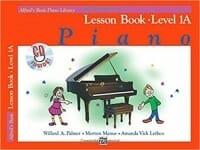
Alfred's Adult Basic All-In-One
Alfred’s Basic Adult All-in-One Course is designed for use with a piano instructor for the beginning student looking for a truly complete piano course. It is a greatly expanded version of Alfred’s Basic Adult Piano Course that will include lesson, theory, and technique in a convenient, “all-in-one” format. This comprehensive course adds such features as isometric hand exercises, finger strengthening drills, and written assignments that reinforce each lesson’s concepts. There is a smooth, logical progression between each lesson, a thorough explanation of chord theory and playing styles, and outstanding extra songs, including folk, classical, and contemporary selections.
The Brown Scale Book
This essential resource includes all major and minor scales, triads, arpeggios, dominant sevenths, and chromatic scales organized by key. A favorite for decades, The Brown Scale Book belongs in every student’s library.
The Real Vocal Book
The Real Vocal Book has many of the selections from Volumes 1 and 2 of the instrumental Real Books, but now with complete lyrics added to the pre-existing melody line. This edition features 300 essential songs arranged for low voice, including: Alfie * All of Me * Autumn Leaves * Bewitched * Bluesette * Don’t Get Around Much Anymore * Fever * Georgia on My Mind * Misty * Moon River * My Funny Valentine * Satin Doll * and more. Looking for a particular song? Check out the Real Book Songfinder here.
